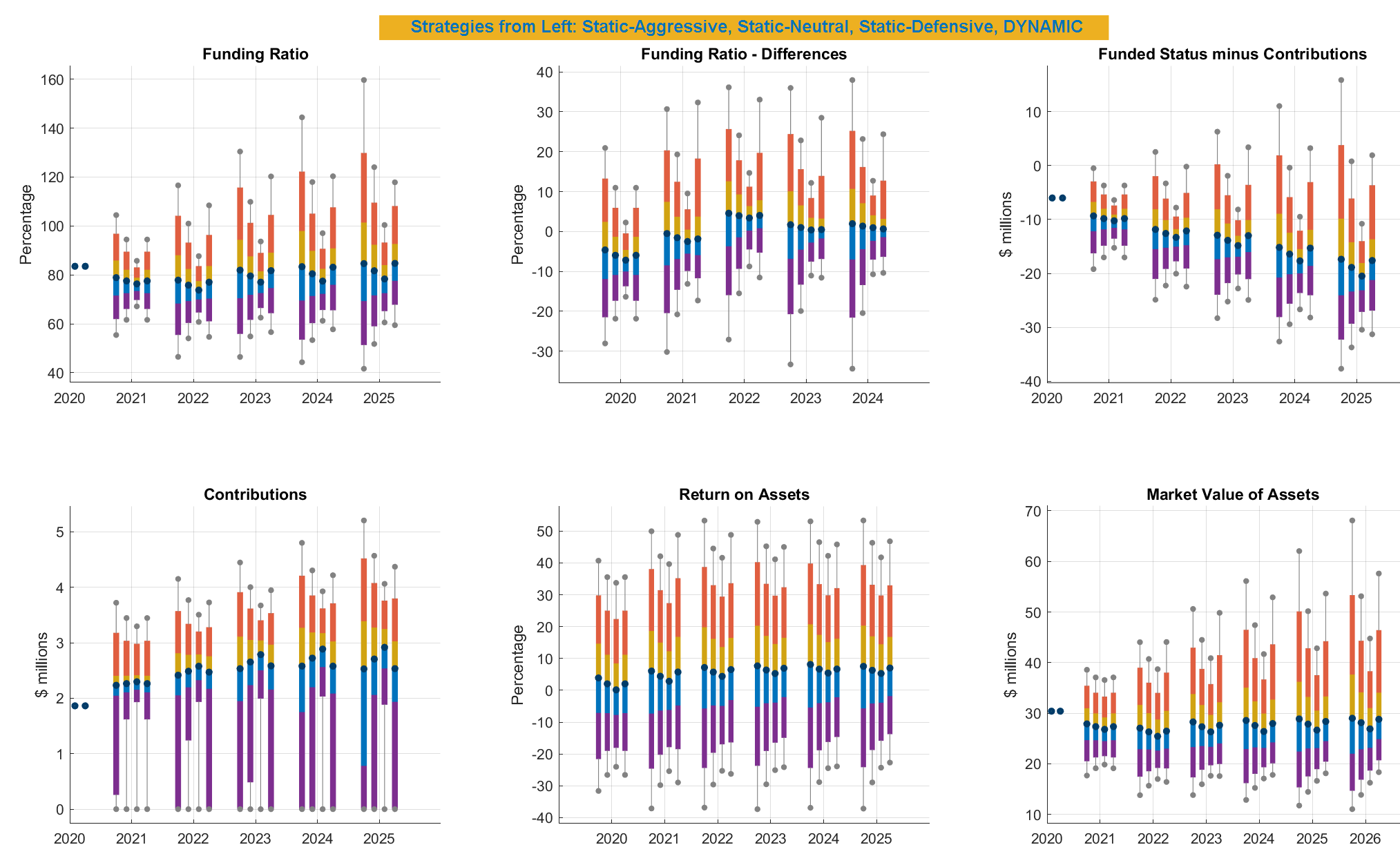Optimized Glidepath: Direct Result of Stochastic Optimization
Optimized multi-trigger Glidepath is the direct result of stochastic portfolio optimizations solved via Dynamic programming methods:

Stochastic Efficient Frontier
Stochastic Efficient Frontier is a very effective way to analyze simulated results of ALM Studies in order to compare impacts of various investment strategies. Just like Traditional Efficient Frontier, Stochastic Efficient Frontier depicts investment strategies based on their respective Risk and Return levels. However, Traditional and Stochastic Efficient Frontiers define Risk and Return differently as shown in the following table:
Risk Measure
Standard Deviation of asset returns
Downside level of Funded Status
Return Measure
Expectation of asset returns
Median level of Funded Status

Dynamic vs Static: Stochastic Efficient Frontier
Stochastic Efficient Frontiers are used in order to compare Dynamic Asset Allocation Strategy and Strategies which are Static in nature, based on four different metrics: Funding Ratio, Funded Status, Utility Function, and Funded Status reduced by Accumulated Contributions:

Dynamic vs Static: Simulations
Performance of Dynamic Strategies can also be compared to performance of Static strategies by utilizing stochastic simulation charts:
